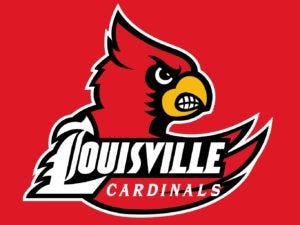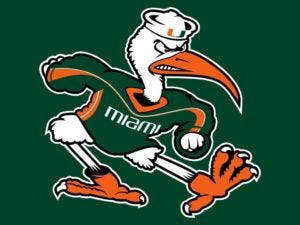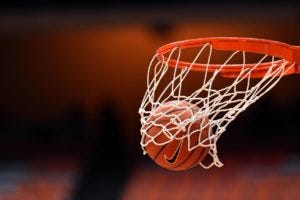The NCAA Corruption Case and the Limits of Fraud
Not everything that's sleazy is criminal
There’s an unusual criminal case pending in the Southern District of New York. The defendants are charged with a single count of conspiracy to commit wire fraud. Here are the characteristics of their alleged scheme:
The underlying conduct was not illegal
The defendants did not intend to harm the "victims” but actually wanted to help them
If the scheme had succeeded, the victims would have benefited
The defendants did not obtain any money or property from the victims and did not intend to
The defendants did not personally lie to or deceive the victims
Top-level employees of the victim organizations were encouraging the scheme and working with the defendants to help it succeed
The case is part of the NCAA basketball corruption scandal. The defendants, former Adidas executive James Gatto and two others, were indicted for taking part in a scheme to pay star high school players and their families to induce them to attend Division I universities with basketball programs sponsored by Adidas. The alleged victims of their scheme are the universities themselves -- whose coaches actively worked with the defendants to help the scheme succeed.
The defendants have moved to dismiss the indictment. They claim the case improperly seeks to criminalize NCAA rules and that their conduct did not amount to a scheme to defraud. The judge will hear arguments on February 15, but the motion is unlikely to be granted. It would be extraordinary to get the case thrown out at this early stage.
The allegations of the indictment are likely sufficient to get to trial. But this case definitely stretches the limits of criminal fraud. If it goes to trial, I think the government will have a tough time persuading a jury (or a court of appeals) that the defendants had the requisite intent to defraud. And even if the case holds up legally, it raises serious questions about the exercise of prosecutorial discretion and the appropriate use of federal criminal sanctions.
The Defendants and the Schemes
The three defendants – James Gatto, Merl Code, and Christian Dawkins – were part of a group of ten individuals arrested in the NCAA investigation back in September. Gatto is the former global marketing director for basketball at Adidas. Code is a former consultant to Adidas, and Dawkins is a business manager who represents athletes. (I wrote about the charges against all ten after they were arrested, you can find that post here.)
The defendants were originally charged along with two other men, Brad Augustine and Munish Sood, in a criminal complaint containing four felony counts: wire fraud conspiracy, money laundering conspiracy, and two counts of wire fraud. By the time the indictment was handed down in November, the government had dropped two of the defendants and three of the charges. (It’s possible that Sood and Augustine have agreed to plead guilty and cooperate; in the indictment they are now referenced as unindicted co-conspirators CC-1 and CC-2.)
The indictment now charges only Gatto, Code and Dawkins with a single count of conspiracy to commit wire fraud against two different universities: the University of Louisville and the University of Miami. In the Louisville scheme, the defendants allegedly arranged to pay the family of a star high school basketball player $100,000 in exchange for his agreement to attend Louisville and later to sign with Dawkins and Adidas for sponsorships and professional representation. The indictment alleges that one or more coaches at Louisville knew about and encouraged the scheme.
The plan was to cause Adidas to make the payment in $25,000 installments by creating phony invoices from a company controlled by Code. Code would then transfer the money to Dawkins, who would give cash to the student’s father. Adidas made two such payments of $25,000 before the scheme was halted by the arrests.
The indictment alleges the defendants were plotting to pay a second student to attend Louisville as well. In a meeting that included one of the Louisville coaches, Code was allegedly given cash to be funneled to that player’s family. That payment apparently had not yet been made when the defendants were arrested.
The Miami scheme involved a similar plot concerning a high school player who would graduate in 2018. The plan was to pay that student’s family $150,000 in exchange for his agreement to attend Miami and to sign up with Adidas and Dawkins. Once again, this plan was carried out with the knowledge and participation of one or more of the basketball coaches at Miami. Preliminary discussions and planning took place but no money actually changed hands before the defendants were arrested.
The planned payments to the students and their families were not illegal. But they would make the students ineligible athletes under the NCAA rules. Those rules require student athletes to be amateurs who do not receive any payments or other benefits for their participation in college sports. A university found to have ineligible players on its team is subject to sanctions including financial penalties, limitations on post-season play, and limitations on financial aid that may be awarded to other athletes. The potential harm that could result from such rules violations is what forms the basis of the government's fraud allegations.
The Defense Motion to Dismiss
In their motion to dismiss, the defendants claim the indictment does not make out a conspiracy to defraud. Although they rely upon different legal theories, the argument boils down to this: there was no scheme to defraud because the defendants were trying to help the universities, not harm them. The defendants never sought to obtain anything from the universities for themselves, or to deprive the universities of any money or property. Far from deceiving the universities, they were working with the heads of their basketball programs toward a common goal. That work may have violated NCAA rules, but it was not criminal.
The government’s first response is that the defense claims are premature. Prosecutors argue that the indictment makes out a facial case of conspiracy to defraud, and at this stage that is all that is required. Many of the defense arguments, they claim, rely on disputed facts. Those arguments may be considered only after trial, when the evidence is in and all the facts are known.
On the legal merits, the prosecutors argue the indictment properly charges two fraud theories: 1) the defendants conspired to defraud the universities of property by causing them to pay scholarship money to athletes who would be ineligible under NCAA rules; and 2) the defendants conspired to defraud the universities of their right to control their assets by depriving them of information relevant to their decisions about where to spend their limited scholarship funds.
Was it a Fraud?
This is a strange fraud case. The universities arguably would have been deceived had the scheme been successful – although since the heads of their basketball programs were involved in the scheme, even that is debatable. But the law draws a distinction between being deceived and being defrauded. To defraud typically means to obtain something of value from the victim, to profit at the victim’s expense.
In this case the defendants were working with representatives of the victims towards a shared goal. They were not trying to obtain anything from the universities. In fact, the defendants would benefit from the scheme only if the universities also benefited.
The government argues the universities would have been deprived of money in the form of scholarships awarded to ineligible athletes. But in exchange for that money the universities would have received the services of the athlete in question. Usually if you get what you expected to get at the price you expected to pay, you have not been defrauded.
To avoid this problem the government basically analogizes the student athletes to a defective product. The universities didn’t get what they bargained for because they expected to get a NCAA eligible amateur athlete, not one who would potentially subject them to sanctions. In this case, though, the “product” was not inherently defective and would perform exactly as expected. There would only be a problem if the scheme was discovered by a third party – the NCAA. That risk may have been a by-product of the scheme, but inflicting that harm was certainly not the scheme’s goal.
Fraud also usually requires some deceit or deception by the defendant. The defendants point out there is no allegation they personally deceived the universities at all. Indeed, how could they be deceiving the universities when representatives of the universities were actively involved in the scheme?
The prosecutors respond that the defendants knew their scheme would eventually cause the students, parents and coaches to falsely represent to the universities that they were not aware of any NCAA rule violations. They also characterize the coaches as distinct from the universities, arguing they were not acting on behalf of the universities but as part of the plot to deceive them.
Separating the coaches from the universities in this way feels artificial. In this case, unlike in some of the other NCAA prosecutions, the coaches are not named as defendants, or even as unindicted co-conspirators. There is no allegation they were taking bribes or otherwise personally profiting from the scheme. Like the defendants, their only apparent purpose was to help the university’s basketball program obtain top players. If the coaches had committed another crime in the course of working with the defendants, principles of corporate criminal liability would allow the government to prosecute the universities because the coaches were acting on their behalf. Although the universities would no doubt prefer to be portrayed as innocent victims, it's more accurate to characterize them as willing participants in the scheme.
Prosecutors also allege that the defendants took steps to conceal the scheme by creating phony invoices and routing the payments to the families through a company owned by defendant Code. However, those steps were designed to conceal what was going on from Adidas, so that the defendants could induce Adidas to pay the money. They don’t demonstrate any effort to deceive the universities. In sum – the defendants have a point. This case lacks the typical indicia of a criminal fraud case.
A Sound Exercise of Prosecutorial Discretion?
This has the feel of a case where prosecutors stretched to find a criminal theory to cover conduct that really shouldn’t be criminal. Given the breadth of the concept of fraud prosecutors may able to make a legal case, particularly on the “right to control” theory. They may be able to persuade a jury and even convince a court of appeals, although I have my doubts. But that doesn’t mean the case should have been brought.
It's noteworthy that when the defendants were first arrested prosecutors charged them with four felonies and trumpeted the fact that each defendant faced up to eighty years in prison. Six weeks later when the case was indicted, prosecutors had dropped three of the four charges (including money laundering charges that, as I noted at the time of the arrests, were pretty clearly flawed). Usually it's the other way around: you file a complaint on a single charge or handful of charges and then add additional charges during the grand jury process. This scaling back of the case suggests prosecutors may have realized that, in their desire to make a splash with the arrests, they overplayed their hand.
Particularly in white collar cases, the sound exercise of prosecutorial discretion requires using good judgment about what kinds of cases deserve criminal sanctions. In recent years there have been signs the Supreme Court is questioning whether it can still rely on prosecutors to exercise their discretion wisely. I fear that cases like this are only going to contribute to that trend.
White collar investigations often involves conduct where remedies other than criminal sanctions may be appropriate. This seems like one of those cases. These defendants deserved to suffer some consequences. They should lose their jobs and face professional disgrace. There’s no question the NCAA needs to clean house. But these defendants shouldn't be facing a twenty-year felony for conspiring to "defraud" universities whose own coaches were actively working with them towards the same goal.
Update: On February 15, 2018 the judge, as expected, denied the defendants' motion to dismiss. Trial is currently set for October 1.
Update: On October 24, Gatto, Code, and Dawkins were found guilty after a jury trial. They have vowed to appeal.
Update: On January 15, 2021, the U.S. Court of Appeals for the Second Circuit upheld the convictions, holding that the facts did establish a scheme to defraud.




